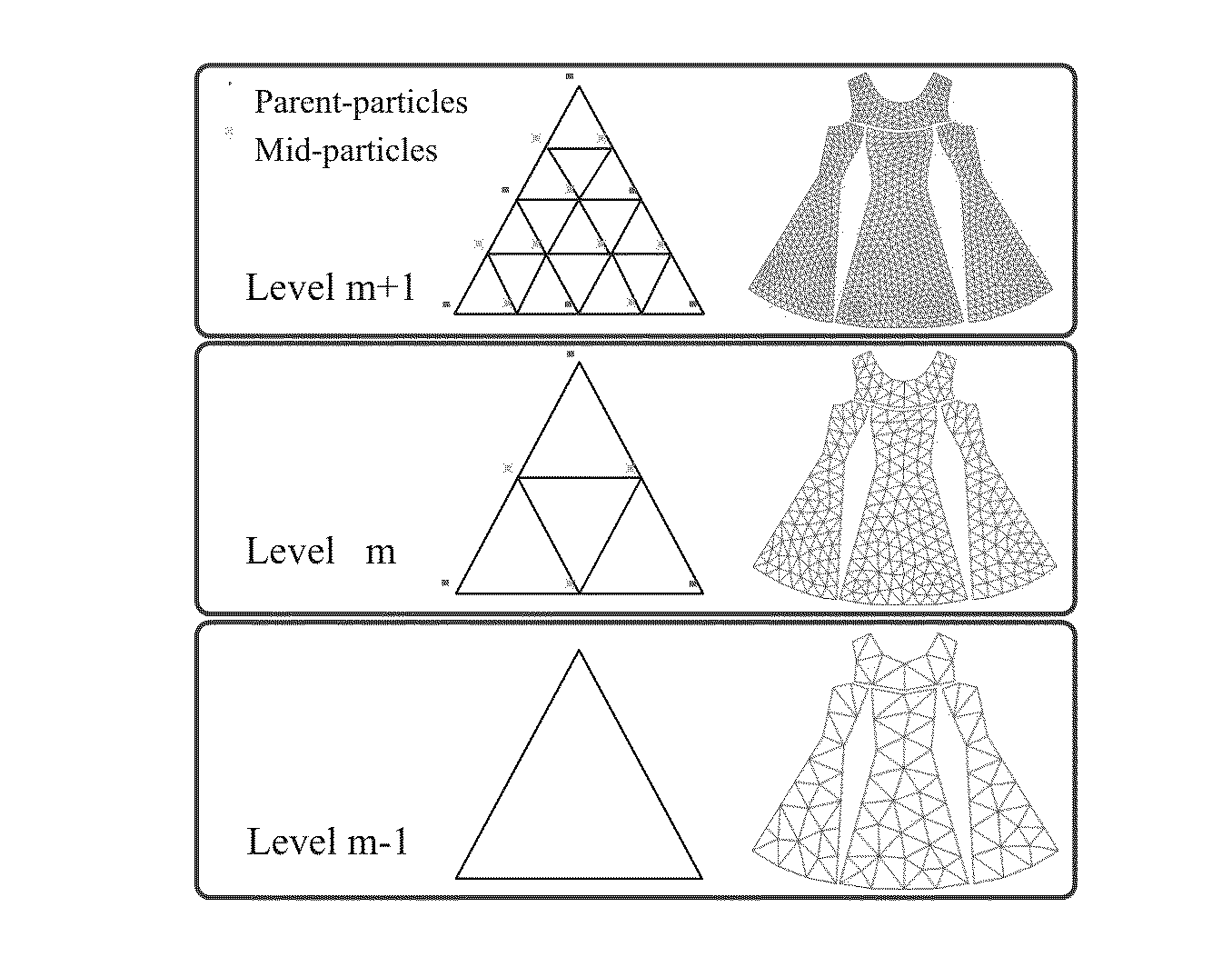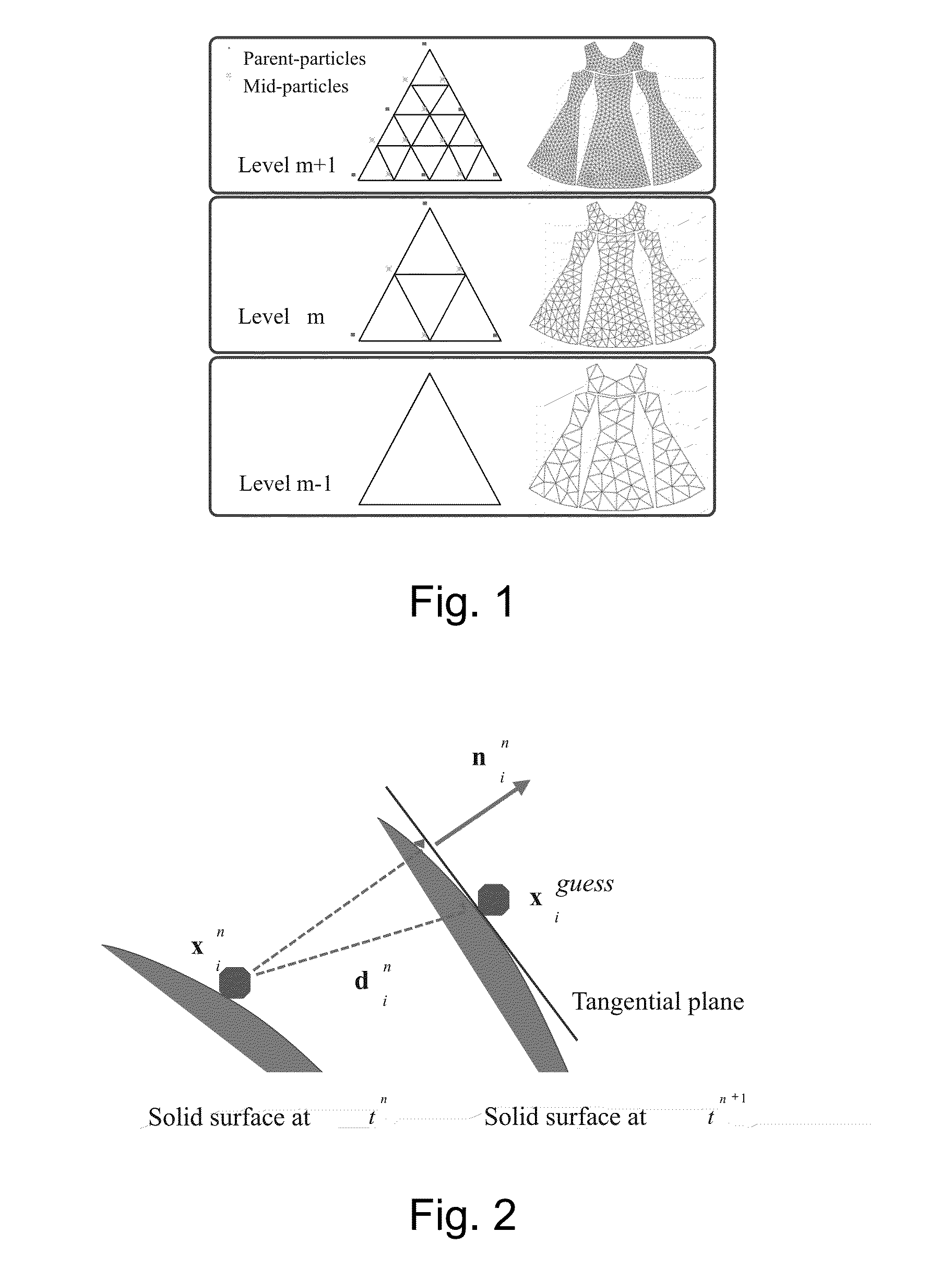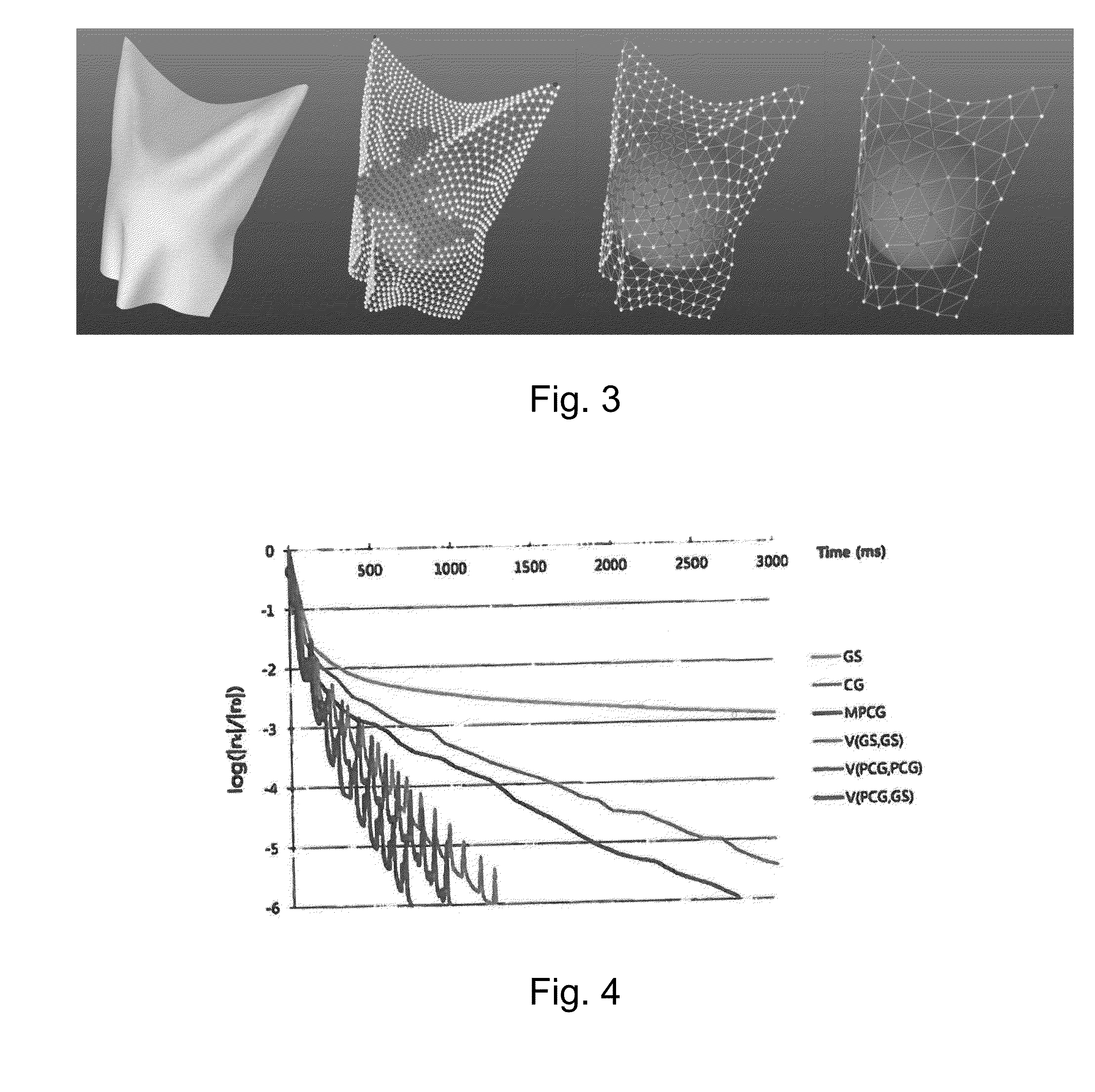Method of Cloth Simulation using Constrainable Multigrid
a multi-grid, constrainable technology, applied in the direction of computation using non-denominational number representation, design optimisation/simulation, instruments, etc., can solve the problems of poor convergence, not directly applicable to clothing simulation methods of standard multi-grid methods, and not ensuring the desired precision, so as to reduce residual errors
- Summary
- Abstract
- Description
- Claims
- Application Information
AI Technical Summary
Benefits of technology
Problems solved by technology
Method used
Image
Examples
Embodiment Construction
[0039]We present a new technique which can handle both point-to-point and sliding constraints in the multigrid framework. Although the multigrid method can theoretically perform as fast as O(n), the development of a clothing simulator based on the multigrid method has been facing a major challenge: handling the constraints. Resolving constrains has been difficult in the multigrid because there has been no clear way to transfer the constraints existing in the finest level mesh to the coarser level meshes. This paper presents a new formulation based on soft constraints, which can transfer the constraints defined in the finest level to the coarser levels. Experiments are performed which show that the proposed method can solve the linear system up to 3-9 times faster in comparison with the modified preconditioned conjugate gradient method (MPCG) without quality degradation. Relative speed up with respect to MPCG is not sensitive to the amount of constraints in the system. The proposed m...
PUM
 Login to View More
Login to View More Abstract
Description
Claims
Application Information
 Login to View More
Login to View More - R&D
- Intellectual Property
- Life Sciences
- Materials
- Tech Scout
- Unparalleled Data Quality
- Higher Quality Content
- 60% Fewer Hallucinations
Browse by: Latest US Patents, China's latest patents, Technical Efficacy Thesaurus, Application Domain, Technology Topic, Popular Technical Reports.
© 2025 PatSnap. All rights reserved.Legal|Privacy policy|Modern Slavery Act Transparency Statement|Sitemap|About US| Contact US: help@patsnap.com



